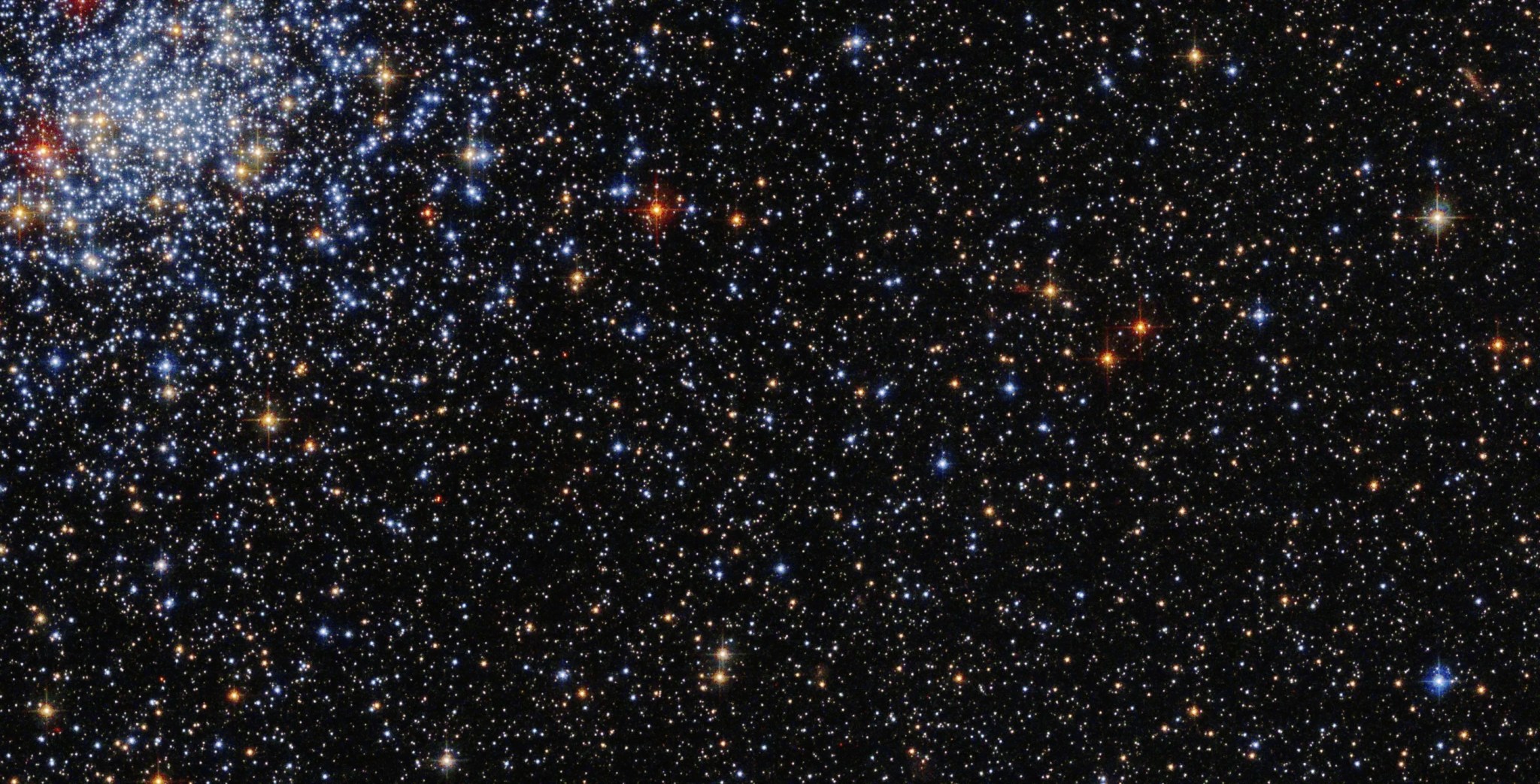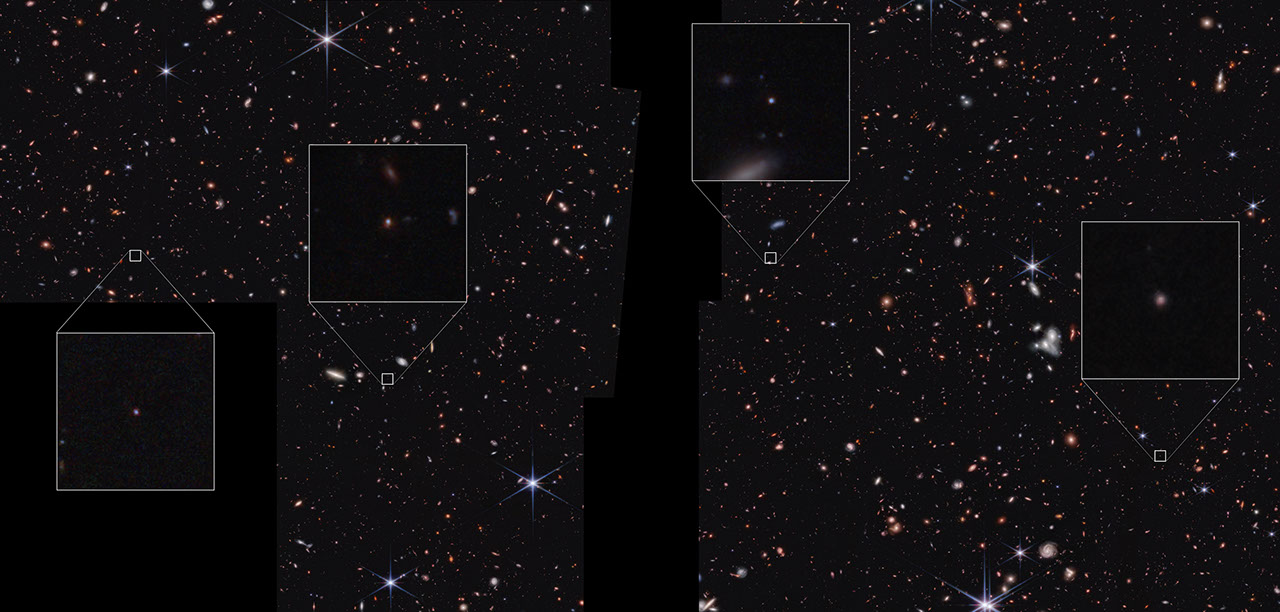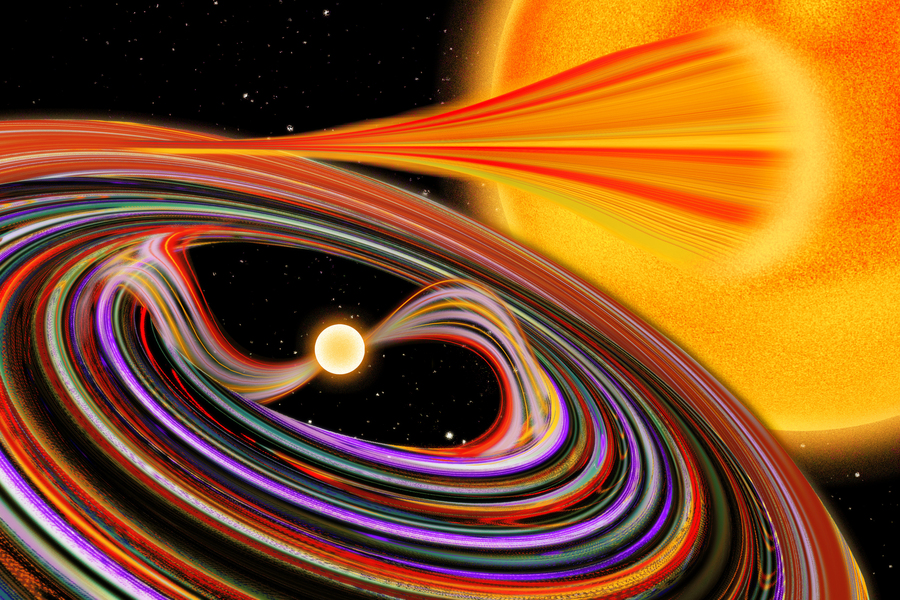In the top left corner of this starry sight, the globular cluster NGC 2031 shines brilliantly. This dense group of thousands of stars is held together in a spherical shape by its stars’ mutual gravitational attraction. The cluster is located in the constellation Mensa in the Large Magellanic Cloud (LMC), a satellite galaxy of our Milky Way with many star-forming regions. It is visible from Earth’s southern hemisphere.
NGC 2031 contains a sizable population of Cepheid variable stars (at least 14), which are stars that brighten and dim periodically. A Cepheid’s period between peak brightness, combined with measurements of brightness and some observations taken from Earth, can help astronomers determine the star’s distance from us. Using these measurements, scientists estimate the distance of NGC 2031 as roughly 150,000 light-years from Earth.
The NGC 2031 cluster lives in an extremely dense and starry region of the LMC. Its location in this crowded area results in “stellar contamination,” a phenomenon where the atmospheres and surface features of nearby stars affect the measurements of objects under study.
Stellar contamination is one theory that could explain observations of bright blue stars in the cluster center. Stars like these typically burn very hot and have short lifespans, but globular clusters are known for housing only ancient stars. Another theory is that these bright blue stars are in fact blue stragglers, a type of star that forms later than its neighbors, enabling astronomers to observe them in older globular clusters such as NGC 2031. Blue stragglers are thought to form from the merging of two old, red stars, resulting in a star with greater mass and therefore bluer color – a theory developed with Hubble’s help from imaging another globular cluster, 47 Tucanae.
NGC 2031 is estimated to be 140 million years old and has a mass more than 3,000 times that of our Sun. Astronomers studied this cluster using Hubble’s ultraviolet capabilities.
Media Contact:
Claire Andreoli
NASA's Goddard Space Flight Center, Greenbelt, MD
301-286-1940






































